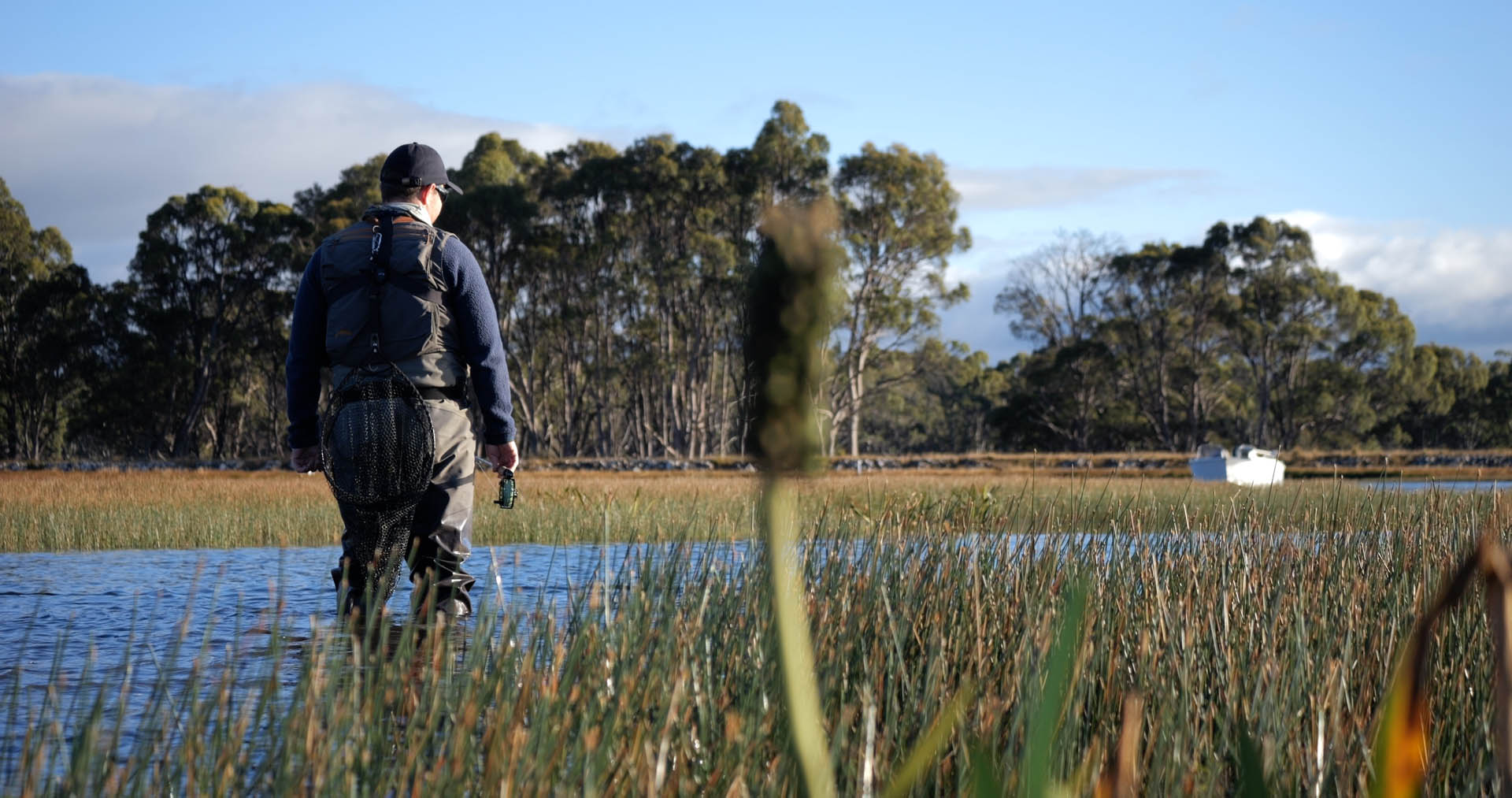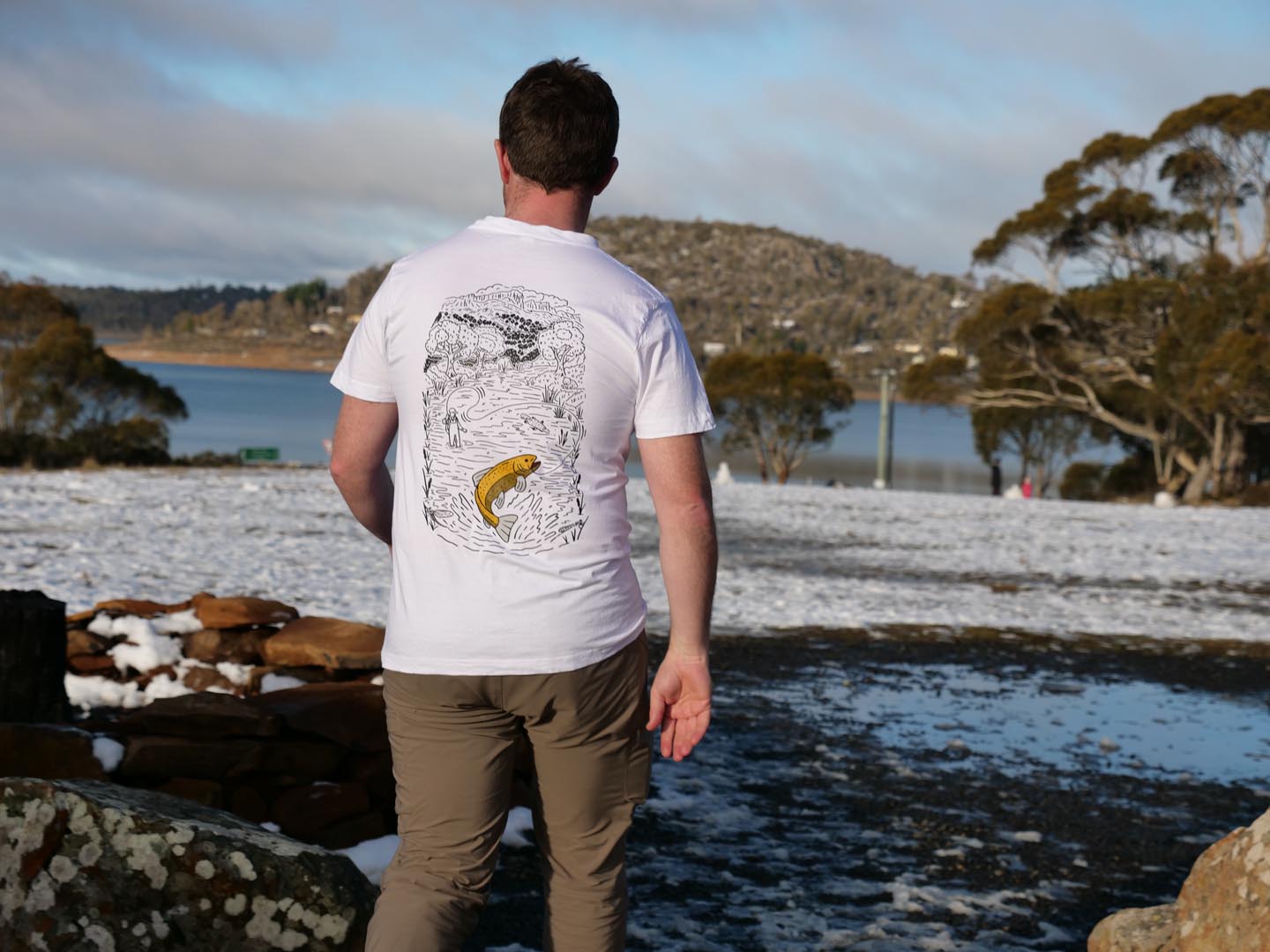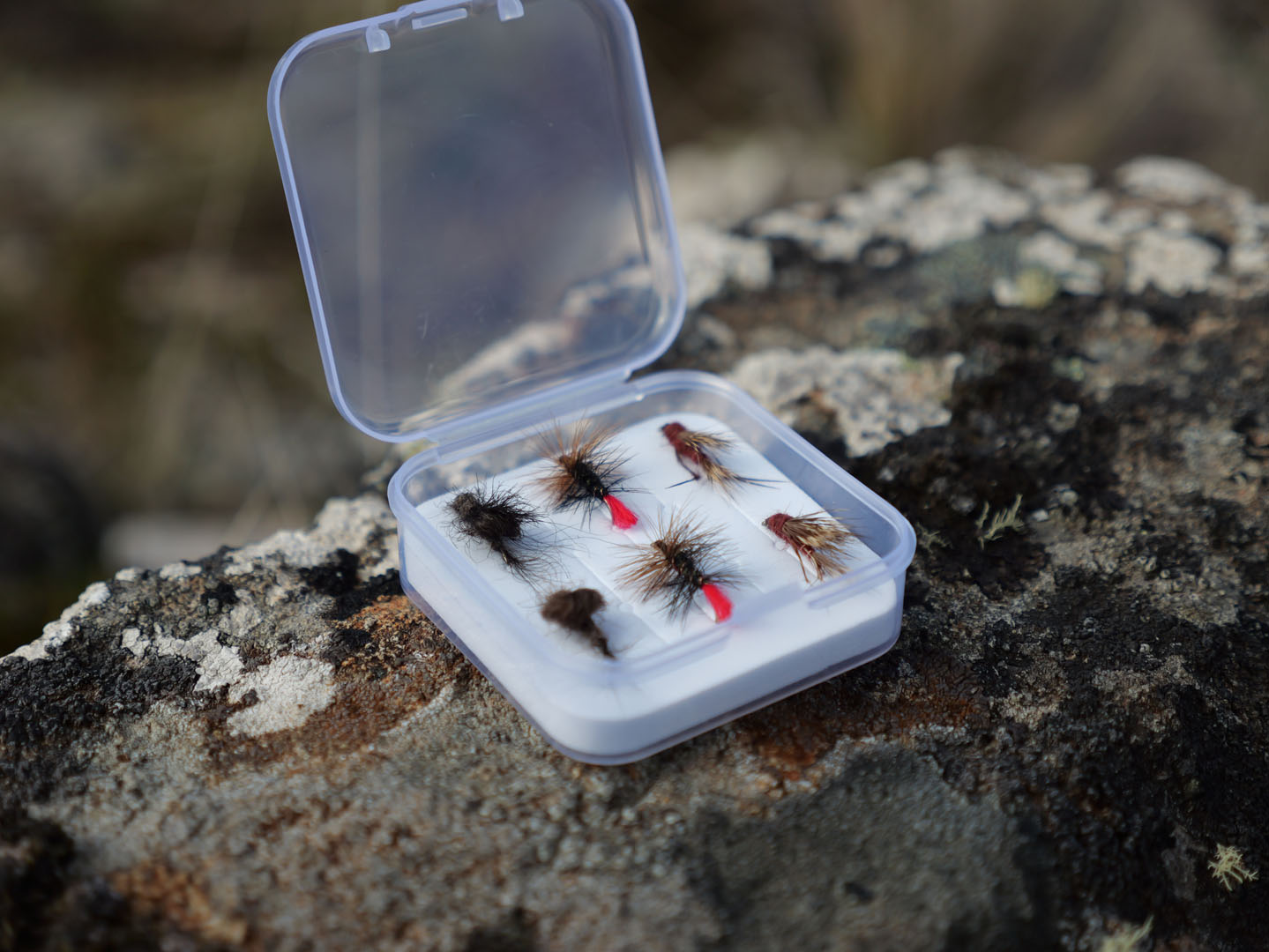With an endless range of lakes, rivers, lagoons and streams, Tasmania really is fly fishing heaven. Read on to learn about some of the techniques we use.
Fly fishing can be a challenging proposition when trout fishing in Tasmania, or any where around the world for that matter.
The endless array of gear, flies and techniques makes fly fishing a complex task for many anglers yet for some, these can be a huge attraction!
Catching trout whilst fly fishing can provide some of your most memorable fishing moments, and in this blog, we break down the steps to make fly fishing in Tasmania simple.
With a few basic steps, trout fly fishing can become quite simple and very effective however arming yourself with the knowledge of some fly fishing techniques, and when to use them, can make fly fishing one of the best ways to catch trout in Tasmania.

When is the best time to fish for trout in Tasmania?
Simply put, the best time to fly fish for trout is when they are actively feeding.
As this could occur anytime between first and last light, so it is important to spend time out on the water, stay alert, be observant and be prepared to take advantage of spikes in activity throughout the day.
Dawn and dusk are common times to see trout feeding on dead or dying insects on the surface of the water, whilst the middle part of the day can produce some great fly fishing when insect hatches are occurring.
So be patient and enjoy being out on the water on some of the most remote and untouched wilderness found anywhere in the world.

How to choose the best technique for fly fishing in Tasmania?
Selecting the right technique is often the biggest decision during a day fly fishing, and reading the water type, weather conditions and observing what the trout are likely feeding on will greatly assist with this.
When lake fly fishing in Tasmania, weather plays a huge part in trout feeding behaviour. Overcast and windy days generally produce the best results, as the fish will be more active and more aggressive when feeding. On bright, sunny days, the trout will generally be sitting deeper, so you will need to adjust your technique for your flies to reach them.
When river fly fishing in Tasmania, river levels are the main consideration when choosing a technique. During periods of high flow, fish will sit in the softer water with less flow and will generally be holding close to the bottom. As the weather becomes warmer and drier, lower river levels will see fish move into the faster flowing water or the deeper pools. Again, this provides vital clues when choosing which technique to use on the day.
Choosing the right fly for fishing
Once you have chosen a technique, fly selection should be fairly simple.
Check out our favourite fly patterns for each technique in our Tasmanian flies blog.

The best Tasmanian fly fishing techniques:
Some of the most effective techniques for trout fly fishing in Tasmania include:
Loch style fly fishing
We have written a few blogs about loch style fly fishing as it one of the most productive ways to fish the lakes in Tasmania. Using a boat to drift downwind allows you to cover large areas of water and gives you the opportunity to fish with dry flies, nymphs and wet flies, depending on what you think will work best on the day.
Wading lake edges
Wading is another great way to fly fish the lakes in Tasmania and frequently provides amazing sight fishing opportunities as the trout come in close to the lake edges. Spotting fish and casting to them is one of the most enjoyable and rewarding ways to fly fish in Tasmania. Generally using dry flies and making a slow and careful approach to the water is the best way to make a subtle presentation without spooking the fish.
Nymph under dry
A popular technique when fly fishing the rivers and streams, this doubles your chances by fishing with a dry fly for any trout looking to the surface, and nymph trailing behind for the fish sitting deeper in the water.
Euro nymphing
Highly effective when water levels are higher or faster, euro nymphing allows you to get your flies down deeper when fish are holding close to the bottom of the river in the slower current. Fish will generally hold in this water to conserve energy and still access a steady supply of food drifting downstream.
New video: The best flies and patterns for trout fishing in Tasmania. Watch it now on the Trout Tales Youtube channel.
Ready to create your own trout tale in Tasmania?
With endless fly fishing options only a short drive away, Trout Tales can show you all the techniques we use when fly fishing for trout in Tasmania - get in touch and book your Tasmanian trout fly fishing tour today.
Feature Posts
Ready to book A trip?
Experience all of what fishing in Tasmania has to offer through a personalised fly fishing tour.
Book Now





